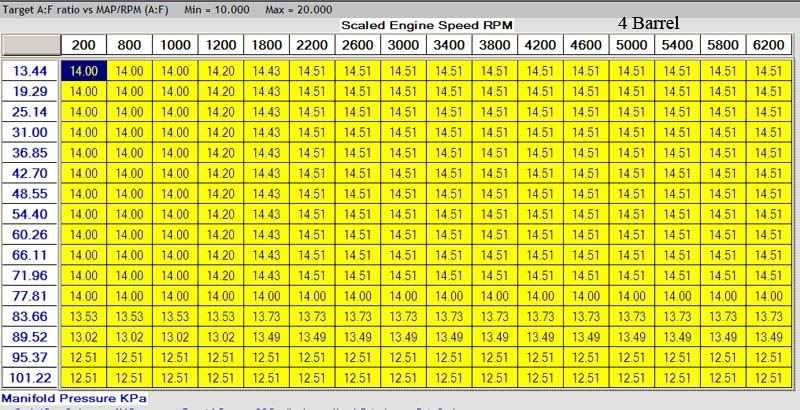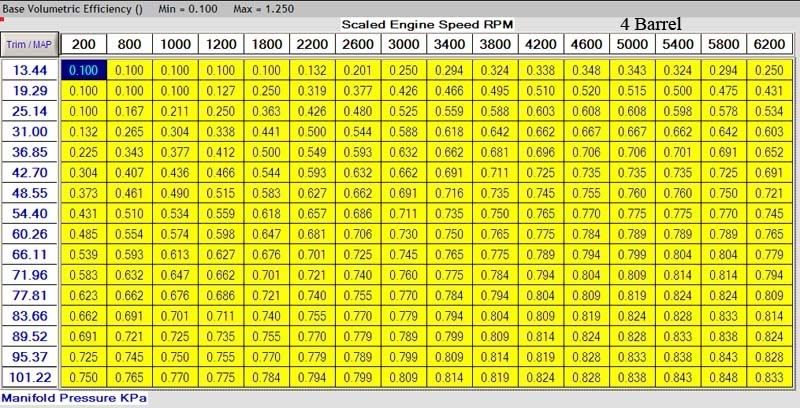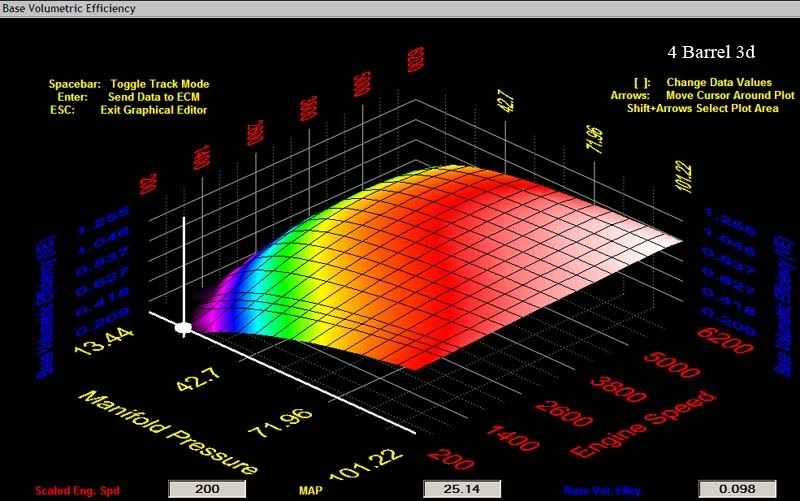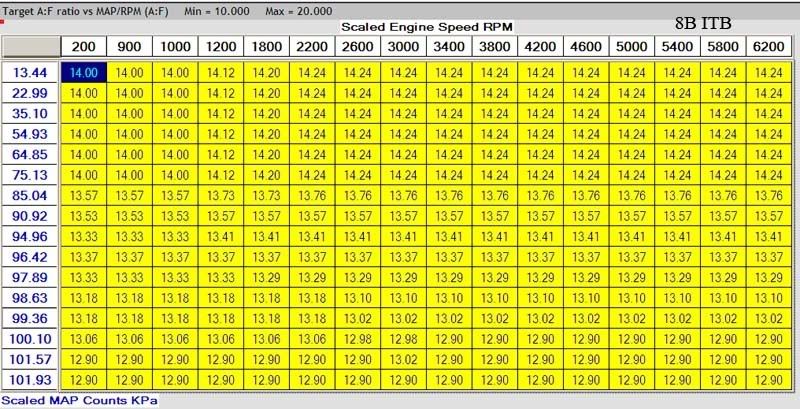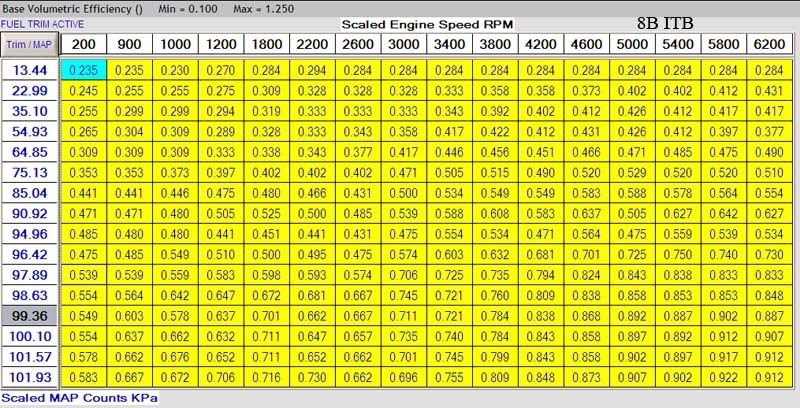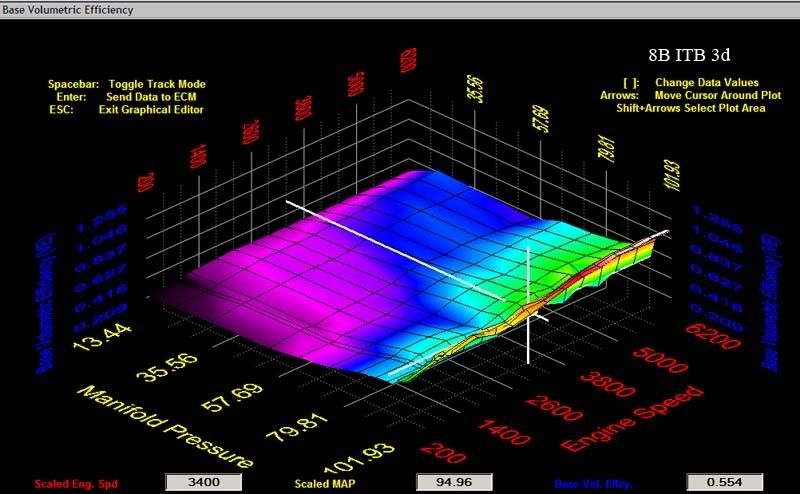Chris Duncan
Supporter
Accel Gen7 ECU, TWM induction, FAST Edist DIS.
Was wondering if there's a good book on programmable EFI? Looking around and can't find anything specific. Already have "Electronic Fuel Injection" by Ben Strader. It's good on theory but not on any hands on blow-by-blow explanation about specific tuning. Like what specific steps to take from start to finish when building a map.
Originally was trying to use the auto-set function within the Gen7 software, but was running very rich. Tried all the possible combinations but nothing worked. Talking to the guys at Accel and find out that the auto-set feature only applies to 4 barrels and not ITB's, although this wasn't stated anywhere.
Well they sent me a map for an ITB setup and in 3D it looks totally different from the 4 barrel map. I'm just wondering how they arrived at this difference?
Another specific question, I have a mid range stumble-pop-backfire. It happens between 2,000 and 2,700 rpm. Under light-moderate acceleration. Very light accel or heavy accel and it won't happen. Outside of this rpm range it won't happen.
Was wondering if there's a good book on programmable EFI? Looking around and can't find anything specific. Already have "Electronic Fuel Injection" by Ben Strader. It's good on theory but not on any hands on blow-by-blow explanation about specific tuning. Like what specific steps to take from start to finish when building a map.
Originally was trying to use the auto-set function within the Gen7 software, but was running very rich. Tried all the possible combinations but nothing worked. Talking to the guys at Accel and find out that the auto-set feature only applies to 4 barrels and not ITB's, although this wasn't stated anywhere.
Well they sent me a map for an ITB setup and in 3D it looks totally different from the 4 barrel map. I'm just wondering how they arrived at this difference?
Another specific question, I have a mid range stumble-pop-backfire. It happens between 2,000 and 2,700 rpm. Under light-moderate acceleration. Very light accel or heavy accel and it won't happen. Outside of this rpm range it won't happen.
Last edited by a moderator:


